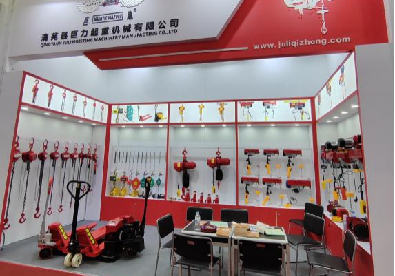


Understanding Pallet Truck Dimensions A Comprehensive Guide
Pallet trucks, also known as pallet jacks, are essential tools in warehouses and manufacturing settings, designed to lift and transport pallets. Their significance in material handling cannot be overstated. One of the crucial factors to consider when choosing a pallet truck is its dimensions. This article will explore the different dimensions of pallet trucks, how they affect their usage, and tips for selecting the right model based on your operational needs.
Key Dimensions of Pallet Trucks
1. Fork Length This is the length of the forks that slide under the pallet. Standard fork lengths typically range from 800 mm to 1200 mm (approximately 31.5 to 47.2 inches). Longer forks allow for greater surface area contact with the pallet, making it ideal for larger pallets or heavy loads. However, they can also pose maneuverability challenges in tight spaces.
2. Fork Width The width of the forks usually varies between 540 mm and 685 mm (approximately 21.3 to 27 inches). A wider fork provides better stability for heavier loads but may require more space for maneuvering. It’s essential to consider the width of the pallets being used; standard European pallets are usually 1200 mm x 800 mm, while a standard American pallet measures 48 inches x 40 inches.
3. Overall Dimensions The overall dimensions of a pallet truck include its height, width, and depth. A typical pallet truck stands around 85 mm (3.3 inches) when the forks are lowered, making it suitable for standard pallets without requiring extra effort for lifting. The overall width of the truck, combined with the fork width, determines how easily it can navigate through aisles and doorways.
4. Turning Radius The turning radius is the space required for the pallet truck to make a complete turn. A smaller turning radius is advantageous in confined spaces, such as narrow aisles in warehouses or crowded storage areas. Standard turning radii vary by model, but typically range from 1300 mm to 1800 mm (approximately 51 to 71 inches).
5. Load Capacity Although not a dimension in the traditional sense, the load capacity directly correlates with the size and strength of the pallet truck. Most manual pallet trucks can handle weights from 2000 kg to 3000 kg (approximately 4409 to 6614 lbs). Selecting a truck with a load capacity that exceeds your typical load is essential to ensure safety and performance.

Importance of Choosing the Right Dimensions
Selecting the right pallet truck dimensions is vital for several reasons
- Efficiency A properly sized pallet truck can reduce the time and effort required to move goods
. For instance, if a truck is too wide for an aisle, it can slow down operations significantly.- Safety Using a pallet truck with appropriate dimensions can minimize the risks of accidents. A truck that is too large for a workspace can create hazards, especially in busy environments.
- Cost-Effectiveness Investing in the right dimensions can save money in the long run. A pallet truck that is ideal for your needs will require less maintenance and last longer compared to a poorly sized model.
Conclusion
In conclusion, understanding pallet truck dimensions is crucial for optimizing material handling operations. The fork length, width, overall dimensions, turning radius, and load capacity all play a significant role in the effectiveness of pallet trucks in various environments. When selecting a pallet truck, carefully evaluate the specific requirements of your operation, including the types of pallets used, available space, and load characteristics. By doing so, you will enhance efficiency, safety, and overall productivity in your warehouse or manufacturing facility. Choosing the right pallet truck is more than just a matter of preference; it's a key factor in successful operations.



